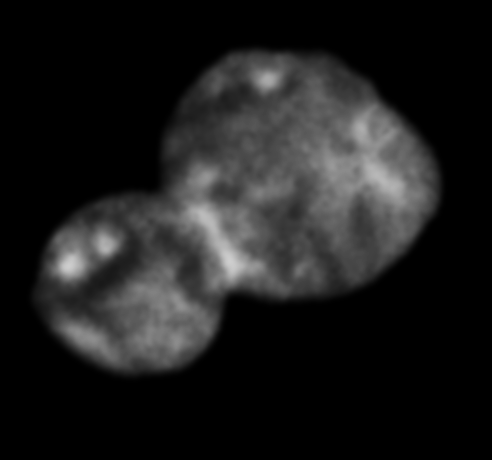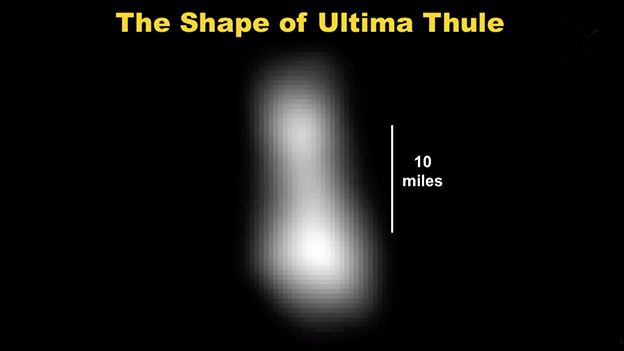 Time of totality during the Total Lunar Eclipse / Total Eclipse of the Moon of 2018 July 27.
(Image Sources: Wikipedia.org, By Giuseppe Donatiello from Italy - Lunar Total Eclipse on July 27, 2018 (100_2006), CC0, https://commons.wikimedia.org/w/index.php?curid=71222333)
Time of totality during the Total Lunar Eclipse / Total Eclipse of the Moon of 2018 July 27.
(Image Sources: Wikipedia.org, By Giuseppe Donatiello from Italy - Lunar Total Eclipse on July 27, 2018 (100_2006), CC0, https://commons.wikimedia.org/w/index.php?curid=71222333)
By Glenn A. Walsh
Reporting for SpaceWatchtower
Sunday evening / early Monday (or
“Moon-Day,” the day-of-the-week named for the Moon) morning,
the only Total Eclipse of the Moon / Total Lunar Eclipse of 2019 will
be visible, completely, in the United States, Canada, and in-fact in
all of North and South America! Portions of the Eclipse will also be
visible in Europe, Africa, the Middle East, western portions of Asia,
and northern portions of Japan.
An Eclipse of the Moon / Lunar
Eclipse is the type of Eclipse that is safe to watch, directly, with
the naked-eye (one-power), binoculars, or a telescope.
Of course, visibility of any Lunar Eclipse / Eclipse of the Moon is dependent on local weather conditions. For areas where
sky conditions are poor, as well as in areas where the Eclipse will
not be visible at all, Internet web-casts of the event will be
available (links to these web-casts are listed near the end of this
blog-post).
A Lunar Eclipse / Eclipse of the Moon occurs when the orbit of the Moon brings our natural satellite into the
Earth's shadow (shadow caused by the Earth completely blocking light
from the Sun), always near the time, and including the time, of a
Full Moon. Native Americans called the Full Moon of January the Wolf
Moon; but, more on that later.
Later on Monday afternoon (about 12
hours after the conclusion of the Lunar Eclipse) will occur the
monthly Lunar Perigee, when the Moon in its orbit around the Earth is
closest to the Earth for this particular month. The distance between the Earth and the Moon at this month's Lunar Perigee: 222,042 statute miles / 357,342 kilometers. This day,
Large Tides Along Ocean Coast-Lines are Predicted, due to the Primary Moon Phase of Full Moon (and Total Lunar Eclipse / Total Eclipse of the Moon) only hours before Lunar Perigee.
When closer to
the Earth, the Moon often looks slightly larger and slightly
brighter than normal. Hence, when Lunar Perigee occurs close to the
time of Full Moon, some refer to the Moon as a “Super-Moon.”
Here are the major stages of this Total
Lunar Eclipse / Total Eclipse of the Moon –
Sunday Evening / Monday Morning, 2019
January 20 / 21 ---
[Eastern Standard Time (EST)
/ Coordinated Universal Time (UTC)]
Penumbral Lunar Eclipse
Begins 9:36:29 p.m. EST / 2:36:29 UTC
Partial Lunar Eclipse
Begins 10:33:55 p.m. EST / 3:33:55 UTC
Total Lunar Eclipse
Begins 11:41:19 p.m. EST / 4:41:19 UTC
Greatest Lunar
Eclipse 12:12:18 a.m. EST / 5:12:18 UTC
Moon Phase - Full
Moon 12:16 a.m. EST / 5:16 UTC
Total Lunar Eclipse
Ends 12:43:18 a.m. EST / 5:43:18 UTC
Partial Lunar Eclipse
Ends 1:50:42 a.m. EST / 6:50:42 UTC
Penumbral Lunar Eclipse
Ends
2:48:06 a.m. EST / 7:48:06 UTC
Monthly Lunar Perigee (Moon closest to
Earth) 3:00 p.m. EST / 20:00 UTC
Duration of time for ---
Complete Eclipse, including all phases:
5 hours, 12 minutes.
Partial Phases: 2 hours, 15 minutes.
Total Phase of Eclipse: 1 hour, 2
minutes.
Of course, "Totality" / Total Phase of the Eclipse is the most impressive part of the Eclipse, what most people wait to see. The Partial Phases of the Eclipse are when a piece of the Moon seems missing, as the Moon moves
further into the Earth's main shadow known as the umbra, or as the Eclipse is ending the Moon is further moving out of the Earth's
umbra.
The Penumbral Phases of the Eclipse are difficult to see,
as the Moon moves into or out of the Earth's secondary shadow or
penumbra. In this case, one would not see any chunks or bites taken
out of the Moon's disk, as one would see when the Moon moves into the
umbra shadow during the Partial Phases. Instead, if your eyes are very
good, you may notice a slight dimming of the light coming from the
Moon, as the Moon moves further into the penumbral shadow
Often, particularly during the middle
of a Total Eclipse of the Moon, the Moon will not disappear from view
but can be seen with a reddish tint, what some call "blood red."
If the Earth had no atmosphere, likely no sunlight would reach the
Moon during a Total Lunar Eclipse, and there would be no "Blood Moon;" the Moon would seem to
completely disappear.
Although no direct sunlight reaches the Moon during
a Total Lunar Eclipse, the Earth's atmosphere refracts the sunlight
around our planet allowing a portion of the sunlight to continue to
be transmitted to the Moon. However, the refracted light reaching the
Moon is primarily in the red portion of the light spectrum, as with
red-tinted sunrises and sunsets (during such a Total Lunar Eclipse, a
person standing on the side of the Moon facing Earth could see all
Earth sunrises and sunsets simultaneously, as they viewed the Earth
in a Total Solar Eclipse !). Hence, it is red light that is
reflected from the Moon back into your eyes during a Total Lunar
Eclipse.
To most Native Americans, the Full Moon
of January was known as the Wolf Moon (although some references refer
to the December Full Moon as the "Wolves" Moon). Of course
this refers to the hungry wolf packs howling on cold and snowy nights
outside Indian villages, as the wolf packs hunted their next meal in
the frigid environment.
The Full Moon in January, in the
Northern Hemisphere, was also known as the Old Moon, the Moon After
Yule, Difficulty Moon, and Black Smoke Moon. And, some Indian tribes
referred to this Full Moon as the Snow Moon, although most tribes
used the Snow Moon name for the Full Moon of February.
In
the Southern Hemisphere, the Full Moon of January was known as the
Hay Moon, Buck Moon, Thunder Moon, and Mead Moon.
Internet Web-Casts Available for those not able to view the Eclipse directly ----
* www.TimeandDate.com: Link >>> https://www.timeanddate.com/live/
* www.LunarEclipse2018.org: Link >>> http://www.lunareclipse2018.org/live-webcast/
* Griffith Observatory, Los Angeles:
Link >>> https://livestream.com/GriffithObservatoryTV/LunarEclipseJanuary2019
* Slooh On-Line Observatory: Link >>> https://slooh.com/shows/event-details/614
Internet Links to Additional Information ---
Total Lunar Eclipse of 2019 January 20-21 -
Link 1 >>>
https://www.jpl.nasa.gov/edu/events/2019/1/21/total-lunar-eclipse-and-supermoon/
Link 2 >>>
https://eclipse.gsfc.nasa.gov/LEplot/LEplot2001/LE2019Jan21T.pdf
Link 3 >>>
https://www.timeanddate.com/eclipse/lunar/2019-january-21
Link 4 >>>
https://en.wikipedia.org/wiki/January_2019_lunar_eclipse
Link 5 >>>
http://buhlplanetarium4.tripod.com/astrocalendar/2019.html#eclipselun20190121
Lunar Eclipse / Eclipse of the Moon: Link >>>
https://en.wikipedia.org/wiki/Lunar_eclipse
Eclipse: Link >>>
https://en.wikipedia.org/wiki/Eclipse
Earth's Moon: Link >>>
https://en.wikipedia.org/wiki/Moon
Moon Illusion - Why the Moon looks larger, when it is low in the sky (NASA):
Link >>>
https://science.nasa.gov/science-news/science-at-nasa/2007/27jun_moonillusion
Related Blog-Post ---
"50th Anniversary: The Incredible Legacy of Apollo 8." 2018 Dec. 24.
The first trip of humans to the Moon !
Source: Glenn A. Walsh Reporting for SpaceWatchtower, a project of Friends of the Zeiss.
Friday, 2019 January 18.
Like This Post? Please Share!
More Astronomy & Science News - SpaceWatchtower Twitter Feed:
Link >>> https://twitter.com/spacewatchtower
Astronomy & Science Links: Link >>> http://buhlplanetarium.tripod.com/#sciencelinks
Want to receive
SpaceWatchtower blog posts in your in-box ?
Send request to <
spacewatchtower@planetarium.cc >.
gaw
Glenn A. Walsh --- <
http://buhlplanetarium2.tripod.com/weblog/spacewatchtower/gaw/ >
Electronic Mail: <
gawalsh@planetarium.cc >
Project Director, Friends of the Zeiss: <
http://buhlplanetarium.tripod.com/fotz/ >
SpaceWatchtower Editor / Author: <
http://spacewatchtower.blogspot.com/ >
Formerly
Astronomical Observatory Coordinator & Planetarium Lecturer,
original Buhl Planetarium & Institute of Popular Science (a.k.a. Buhl Science Center),
Pittsburgh's science & technology museum from 1939 to 1991. Formerly Trustee of the Andrew Carnegie
Free Library and Music Hall, Pittsburgh suburb of Carnegie,
Pennsylvania.
Author of History Web Sites on the Internet --
* Buhl Planetarium, Pittsburgh:
<
http://www.planetarium.cc >
* Adler Planetarium, Chicago:
<
http://adlerplanetarium.tripod.com >
* Astronomer, Educator, Optician John A. Brashear:
<
http://johnbrashear.tripod.com >
* Andrew Carnegie & Carnegie Libraries:
<
http://www.andrewcarnegie.cc >



